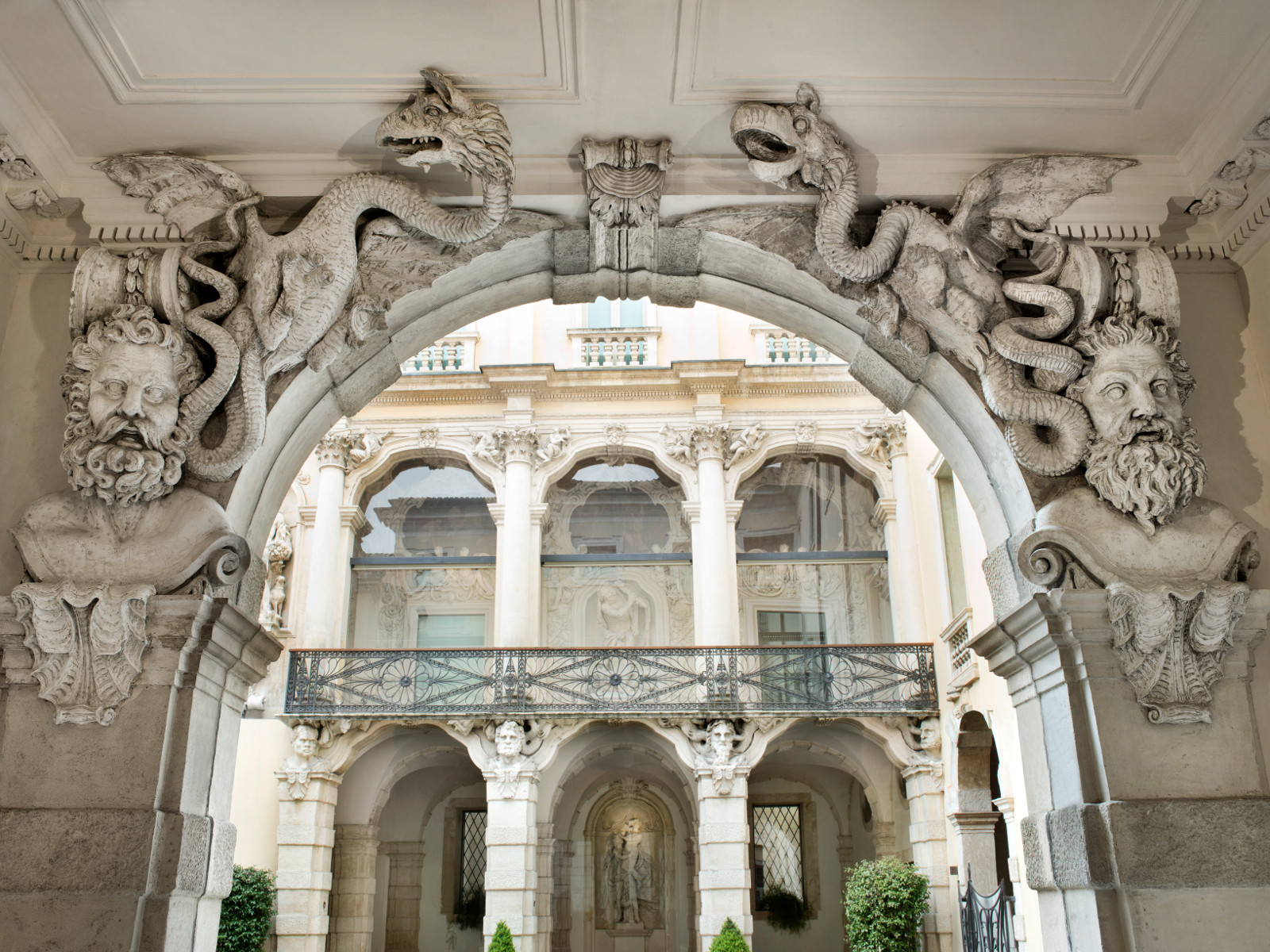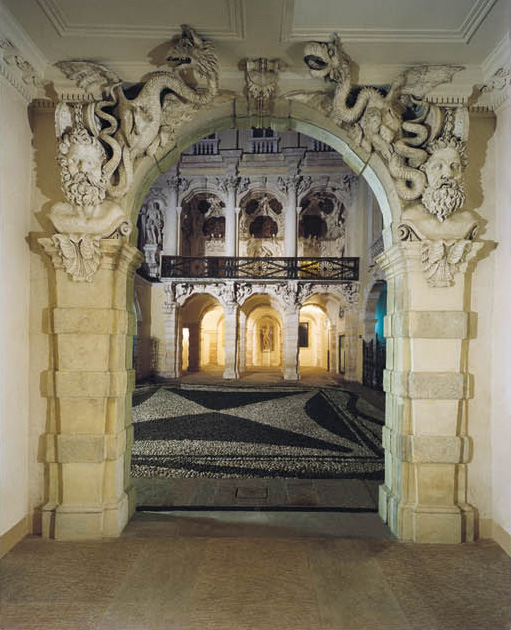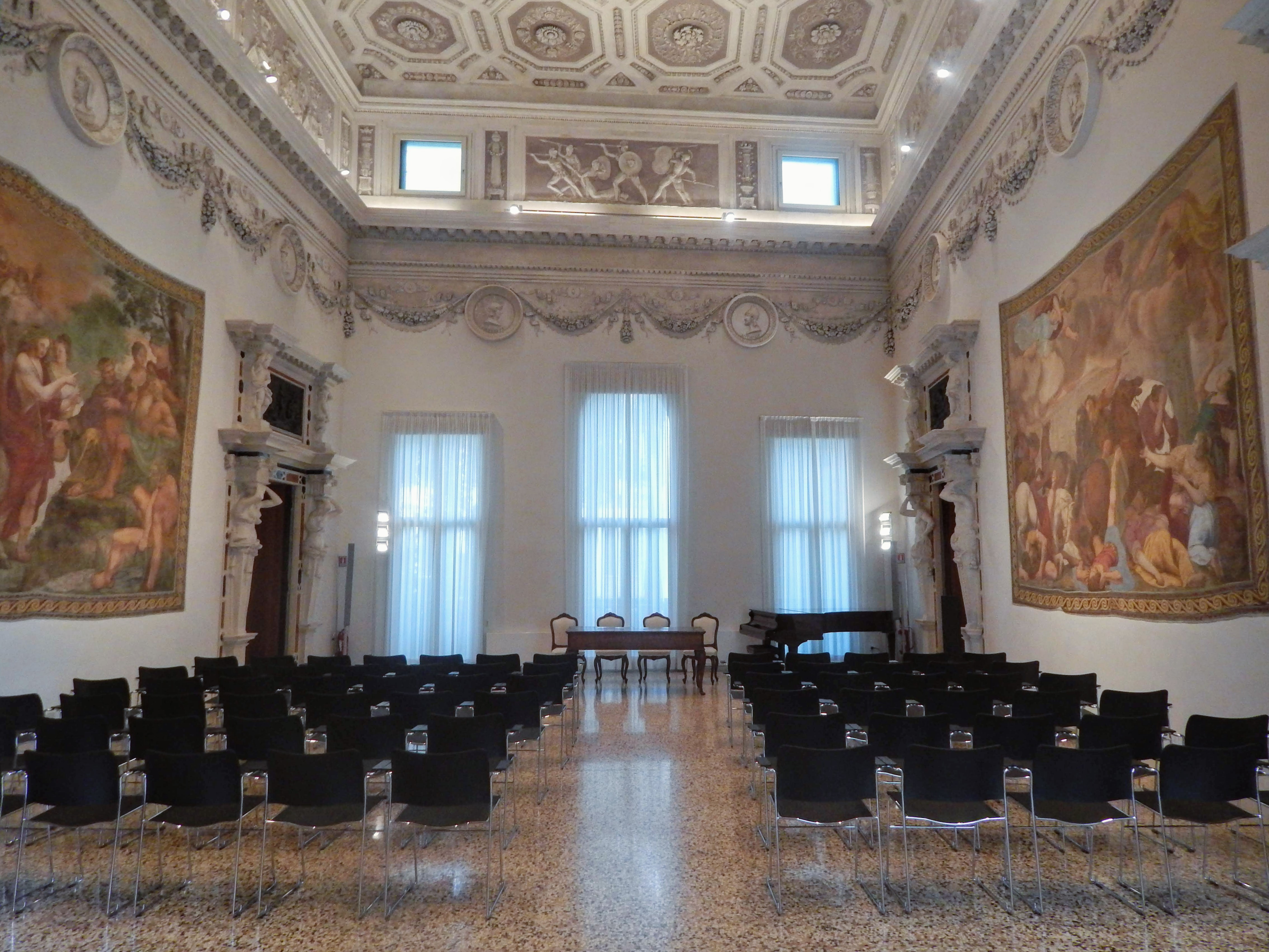The building dates to around 1676 when Giovanni I Leoni Montanari had a sumptuous residence built in the historic centre of Vicenza, near the Dominican church of Santa Corona, at that time one of the beating hearts of the city's religious and cultural life.
Palazzo Leoni Montanari
1676
The first phase of construction of the building, which laid the foundations of the building's layout, may be attributed to Carlo Borella, who trained at the workshop of Antonio Pizzocaro, the most renowned architect in the city at the time.
Late 1700s
The interiors are altered to meet the new living and aesthetic requirements of the Leoni Montanari family, who played a very active role also in the cultural life of the time.
Early 1800s
At the beginning of the 19th century, much of the Baroque layout is altered to suit first the neoclassical and then the eclectic taste of the new times.
1908
After various changes of ownership during the 19th century, the building is acquired by Banca Cattolica Vicentina and is now part of the Intesa Sanpaolo Group's historical-artistic and architectural heritage.
1999
Palazzo Leoni Montanari opens to the public as the first venue of Gallerie d’Italia, the Intesa Sanpaolo museum hub.
Giovanni I's fortune came from the activity of his maternal grandfather Bernardino Montanari, a textile manufacturer and merchant. Having no direct male descendants, he projected all his expectations onto his enterprising and favourite grandson. An ambitious project of dynastic ascent began and would culminate in 1693, when the Vicenza family would obtain a prestigious hereditary noble title.
The first phase of construction of the building, which laid the foundations of the building's layout, may be attributed to Carlo Borella, who trained at the workshop of Antonio Pizzocaro, the most renowned architect in the city at the time.
On several occasions, as early as the end of the 17th century, the interiors were altered to meet the new living and aesthetic requirements of the family, who played a very active role also in the cultural life of the time.
The mansion is characterised by a magnificent combination of stuccoes, frescoes and sculptures, inspired by the Baroque poetry of wonder. Many are the artists involved at various times in the plastic decorations, including Andrea Paraca, Orazio and Angelo Marinali, Girolamo Aliprandi and Andrea Pelli, whereas Giuseppe Alberti and Louis Dorigny were involved on the pictorial fresco parts.
At the beginning of the 19th century, much of the Baroque layout was altered to suit first the neoclassical and then the eclectic taste of the new times.
After various changes of ownership during the 19th century, the building was acquired by Banca Cattolica Vicentina in 1908 and is now part of the Intesa Sanpaolo Group's historical-artistic and architectural heritage.
In 1999 it became the Bank’s first museum.
Gallerie d’Italia - Vicenza, interview with Deputy Director Elena Milan





